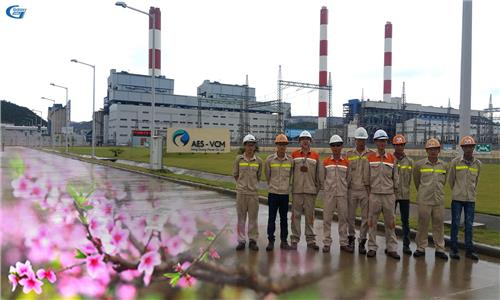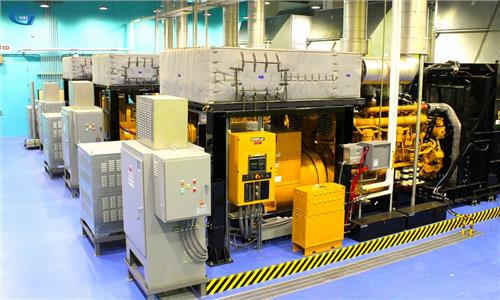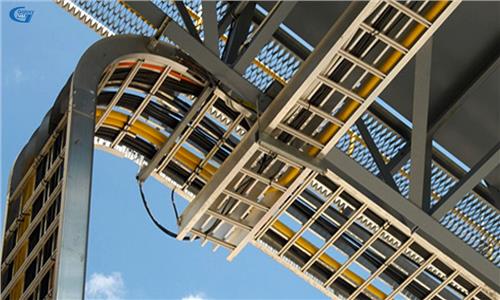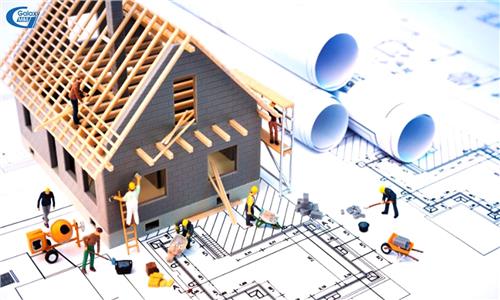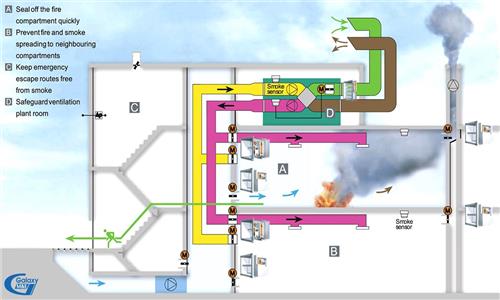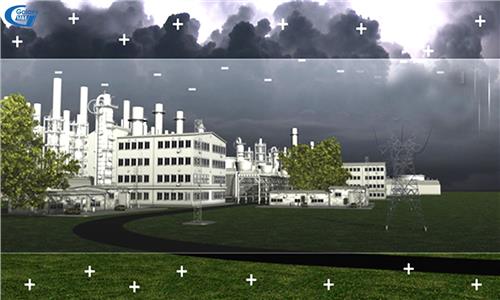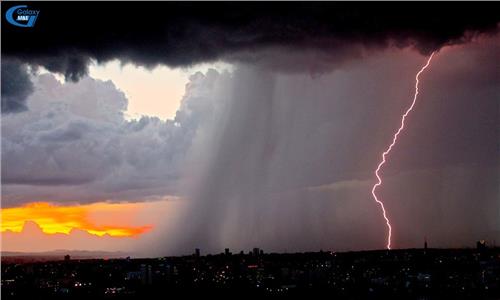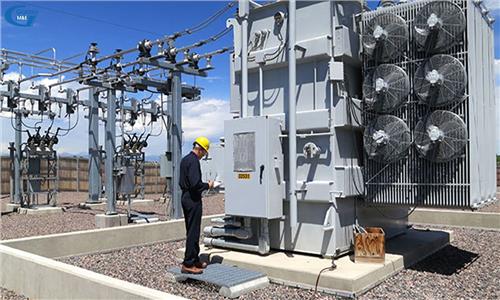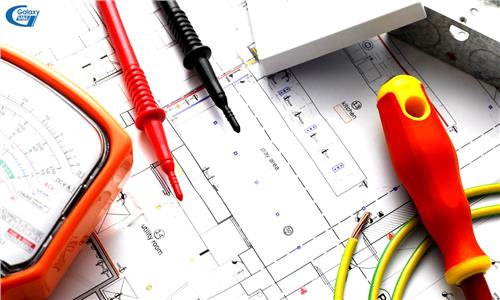Suitable air conditioning systems for construction work | Galaxy M&E
Depending on the space, requirements, investment packages, the owner can choose different types of air conditioning systems. The following article will be contain information regarding two mechanical types of air conditioning units that Galaxy Mechanical and Electrical supply and use, these two types are called Chiller and VR /VRF.
Nowadays on websites, forums, social networks, VRV/VRF systems are the most popular choice of air conditioning units available. However, if applied to industrial buildings, buildings with special requirements, the VRV/VRF systems are not optimal. The content below will provide a multi-dimensional, objective view of these two air-conditioning systems.
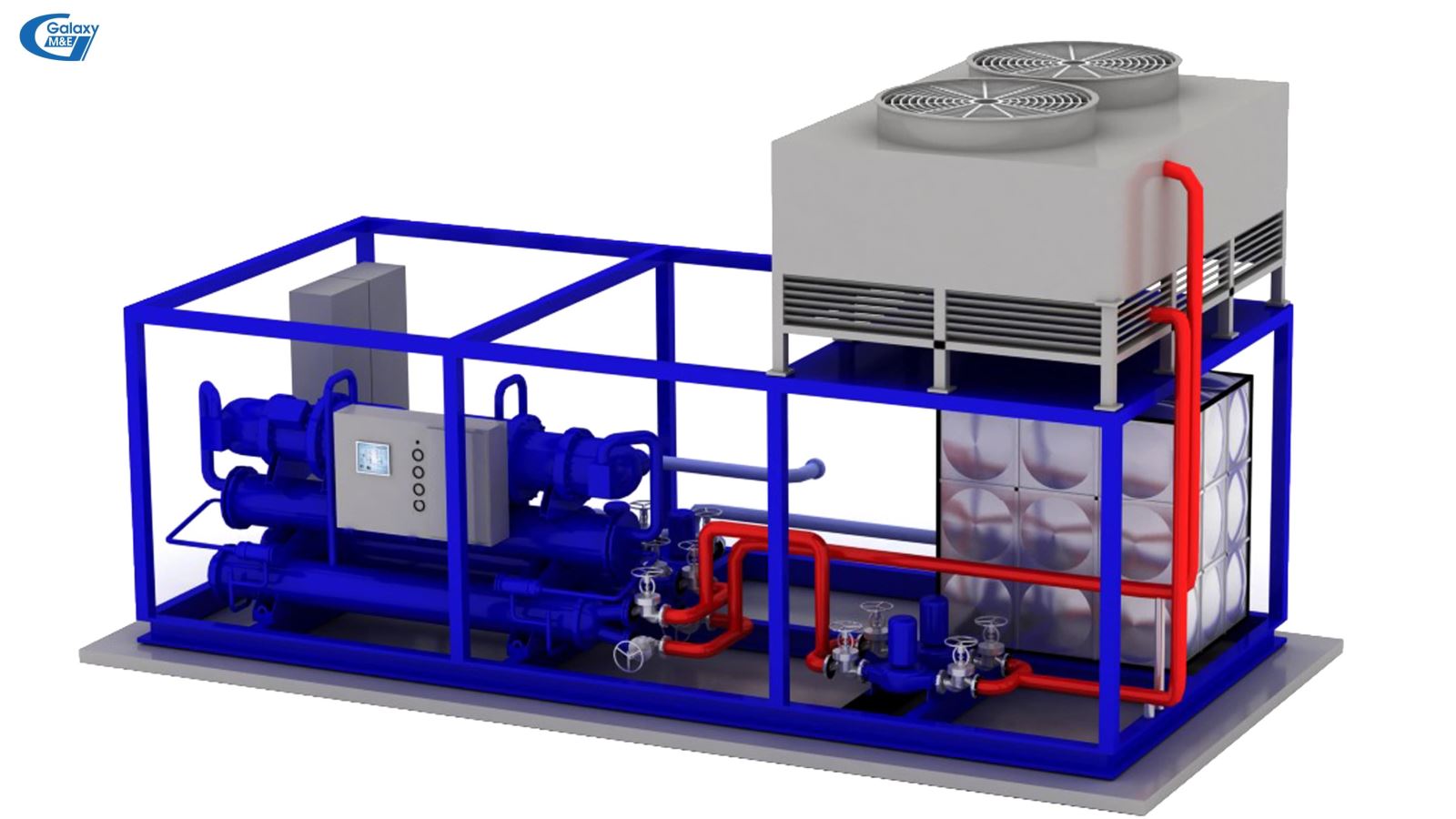
Water Chiller air conditioning system
1. Water Chiller central air conditioning system
The system uses 70C cold water to cool the air through FCU and AHU heat exchangers. The central water-conditioning system consists mainly of:
- A water chiller or a cold water machine usually from 12oC to 70oC;
- Pumping system and cold water pipeline to AHU and FCU. A cooling water pumping system leads into the cooling tower;
- The heating source is used to regulate humidity and provide winter heating.mThis system is usually provided by a hot water boiler or resistance bar;
- Heat exchangers for cooling or heating air with FCU or AHU hot water.
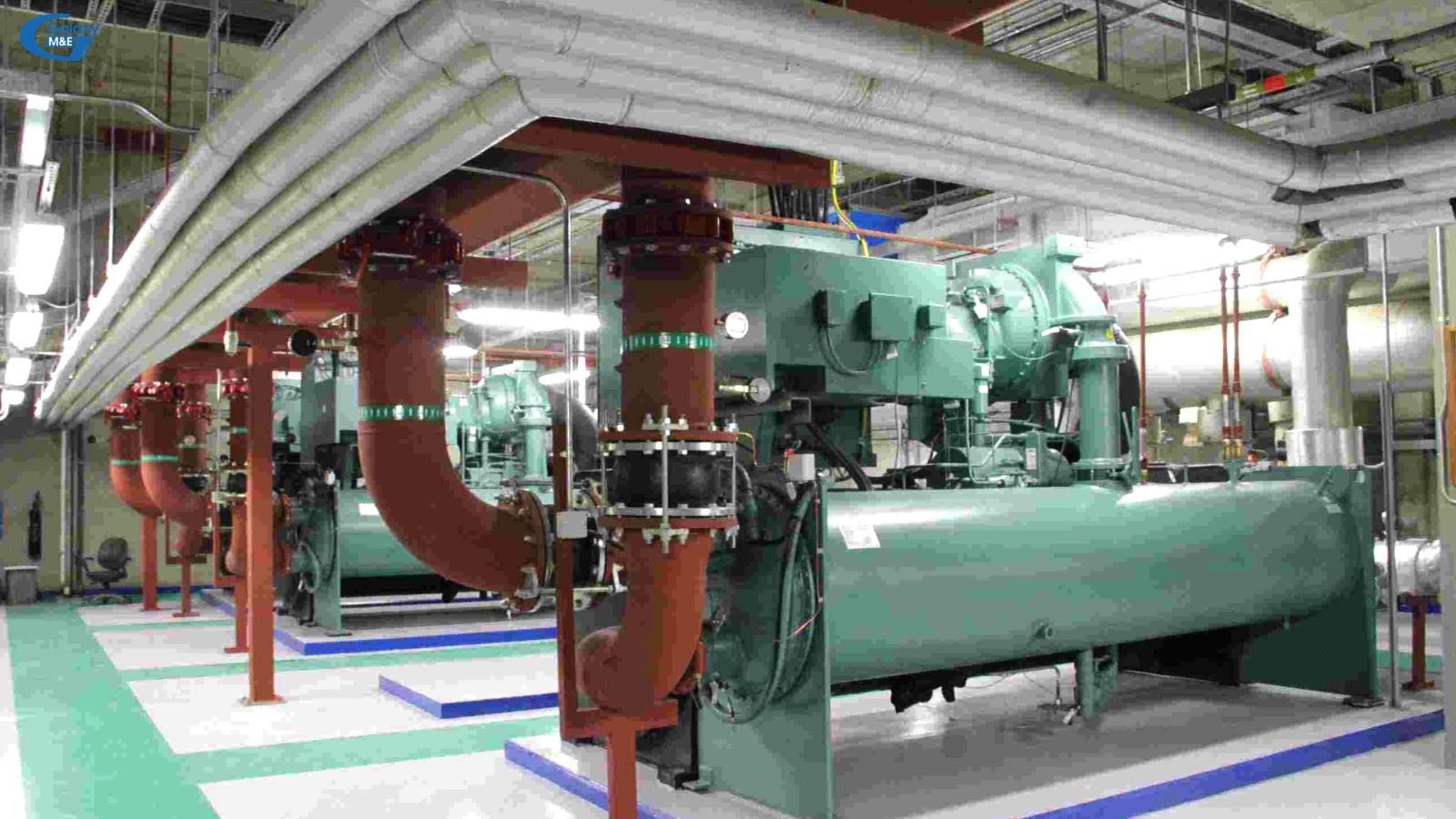
Conditioner Water Chiller at a Russian construction work.
Central air conditioning characteristics of Water Chillers:
- There is a safe cycle that won’t cause fear because no poisoning or incidents will occur whilst using this system.
- This system can control the humidity for each separate room, stabilize and maintain the best microclimate conditions.
- Water pipes are much smaller than wind pipes, thus saving construction materials.
- Ability to handle high air cleanliness, meeting all requirements.

VRV/VRF air-conditioning system.
2. VRV/VRF air-conditioning system
Because the CAV (Contant air volume) and VAV (Variable air volume) duct systems use air ducts to adjust the room's humidity and temperature through canals, taking up a lot of space and installation area, in 1982, Daikin, a Japanese firm, introduced a VRV (Variable Refrigerant Volume) as a solution to adjust refrigerant capacity through the adjustment of the flow rate. The phrase VRV is therefore also exclusively registered by the company, so later companies such as Mitsubishi, Panasonic, and Toshiba used another name as VRF (Variable Refrigerant Flow). So in essence, VRV and VRF air conditioning systems are the same.
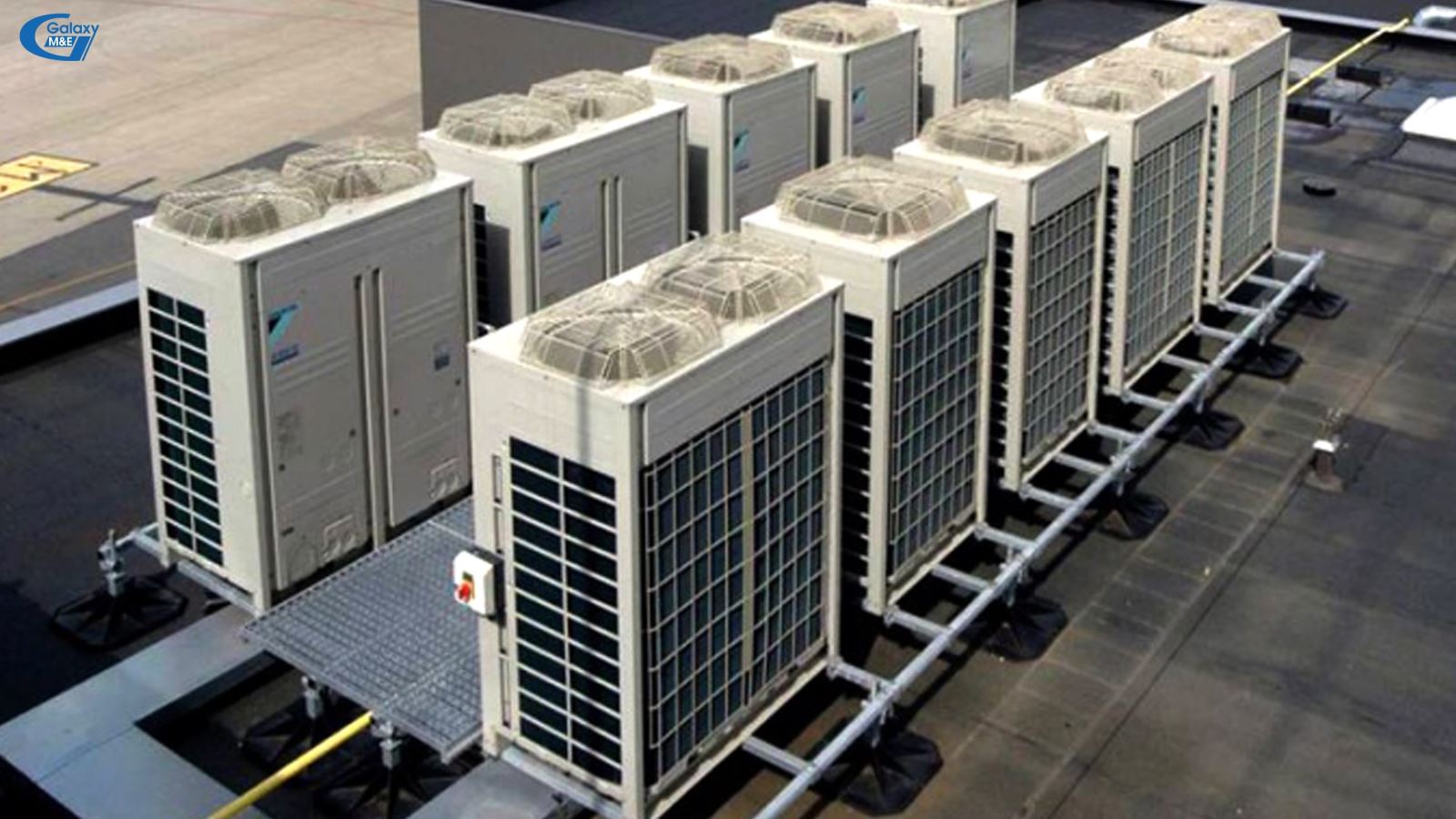
VRV/VRF systems are often used in office buildings.
Features of VRV/VRF system:
- Condensation units have 2 compressors. One is used to adjust cooling capacity according to the on-off type, the other one adjusts the temperature according to the inverter;
- Microclimate parameters are controlled to suit certain demands connected in the central control network (intelligent building control system);
- VRV/VRF units have reasonable power ranges assembled into networks to meet cooling capacity requirements ranging from 7 kW to thousands of kW for high-rise buildings.
- VRV/VRF helps return oil for operation. Therefore, the outdoor unit can be placed higher than the indoor unit up to 50m, and indoor units can be up to 15m apart. Refrigerant piping from the outdoor unit to the farthest indoor unit is up to 100 m, facilitating easy placement in high-rise buildings, offices, and hotels, which previously had only the system water center (Water Chiller).
- Due to the long gas pipeline, reduced cooling capacity, Daikin used an inverter to adjust the cooling capacity, making the refrigeration system better which surpassed many common machine systems.
- VRV/VRF systems have 9 different types of indoor units with up to 6 levels of cooling capacities, which can create both cool air and hot air for users.
3. The advantages of VRV/VRF system over Water Chiller water conditioning system
- Compared to the central water-conditioning system, the VRV/VRF system is more compact because: The outdoor unit is usually located on the rooftop or on the side of the building; Refrigerant pipelines are much smaller in size than cold water pipes and wind pipes.
- The normal air conditioning systems for the entire building, is opposite toVRV/VRF systems that is suitable for individual cooling of each room. VRV/VRF system can precisely control each level to suit the conditions of individual room.
- Save energy and use HRV to ventilate, significantly improve energy efficiency;
- Saving installation space: The efficiency of space utilization is enhanced by the use of a compact machine, large pipe length and the ability to meet a large air system with a single pipeline.
The content above will help customers get more information before choosing the air conditioning system that suits their requirements. In addition to the two air-conditioning systems mentioned above, there are many other systems that have been applied in the world. With accumulated experience in consulting, designing, constructing electromechanical construction through the works of investors from the United States, Japan, Taiwan ... Galaxy M&E is ready to answer, advise and help customers get the most optimal air conditioner solution.
Galaxy M&E





